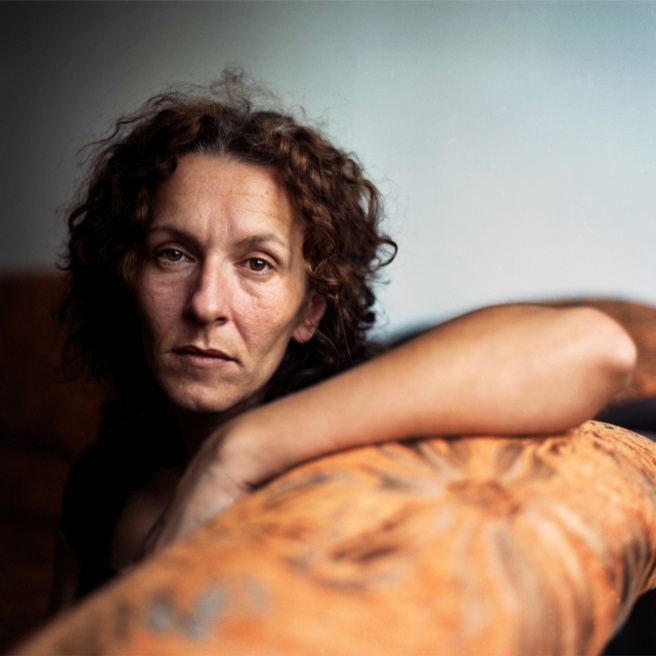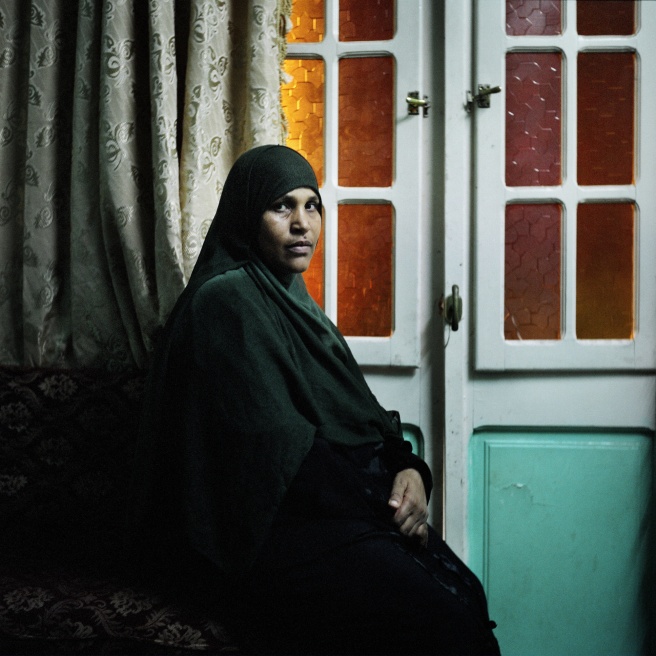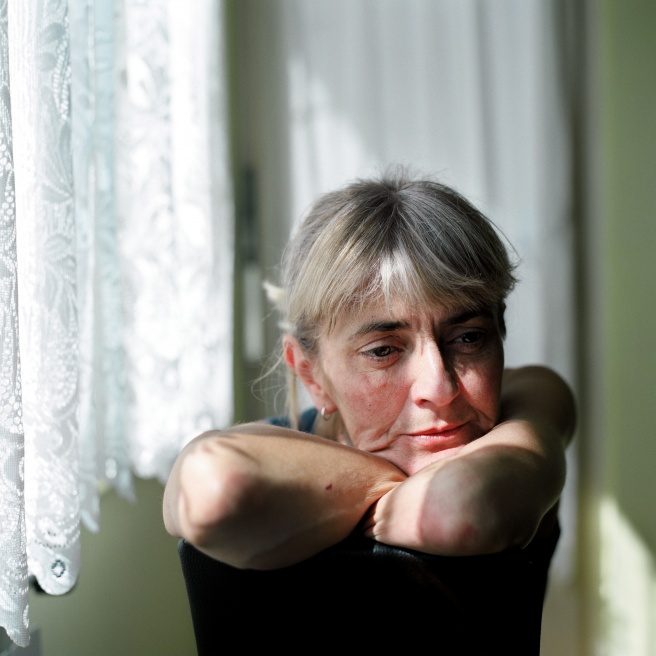INTRODUCTION
A WOMAN'S WAR documents the lives of women engaged in recent conflicts worldwide, as well as their struggle for justice, rights, and their identity as female fighters.
Over the past three years I have documented the stories of 116 women in five countries: revolutionaries of Egypt’s recent uprising, women on all sides of the 1992-1995 Bosnian War, members of the North Vietnamese Army, Protestant and Catholic women of The Troubles in Northern Ireland, and freedom fighters of the 1971 Bangladesh Liberation War. I am now seeking the support of the The FotoVisura Grant to continue this work in the United States, documenting the lives of American women who served in the wars in Afghanistan and Iraq.
BACKGROUND
Women have played key roles in recent conflicts, serving as combatants, nurses, organizers, spies, and more. They have also suffered its consequences: psychological trauma, physical debilitation, displacement, widowhood, rape, and the destruction of their homes and livelihoods. Conflict's end, however, is not the end of their struggle, with many left with the dual burden of confronting battle scars while reconstructing their families’ lives. Perhaps most egregiously, many have found their conflict experiences to be a source of shame, rather than honor. In many countries female fighters, who served the same roles for which their male counterparts have been honored, are forced to conceal or ignore their histories in order to protect their dignity and livelihoods. Their stories have remained largely invisible, absent from history books and the public memory of these conflicts.
A Woman's War documents these invisible histories, coupling potraits and testimonies of women fighters to provide an alternative narrative on modern conflict, as told by women who were active participants.
In the past year, I have extended A Woman’s War to Egypt, with female revolutionaries involved in the recent political and social uprisings; to Bosnia and Herzegovina, with women involved in all sides of the Bosnian War that raged from 1992 to 1995; and to Northern Ireland, with women involved in the country’s decades-long conflict. Previously, I had worked on chapters in Vietnam, with women of the North Vietnamese Army, and in Bangladesh, with women active in the 1971 Liberation War.
Yet, there is much more to be done with this work. I am now looking to expand the project to the United States, to document the experiences of American women who served in the wars in Afghanistan and Iraq. The FotoVisura Grant would be invaluable in allowing the project to grow.
EXPANSION TO THE UNITED STATES
In contrast to the other countries included in the work, where women have fought as guerrillas and revolutionaries for decades, American women have only been allowed on the frontlines in recent years — and only granted permission to officially serve in combat roles this month, with the Pentagon’s historic lifting of the military’s ban on women in combat. Though now hundreds of thousands of additional combat positions will be officially open to women, women have already been facing the same stresses of trauma and redeployment as their male counterparts in Afghanistan and Iraq for the past decade. Additionally, for many women, war was not solely against the enemy; 71% of female veterans serving since the Vietnam War have reported being sexually assaulted or raped by fellow soldiers while on active duty. Upon returning home, counseling and medical care have been significantly lacking, and the pressure not to identify responsible comrades tremendous.
Recent years have seen some progress in acknowledging the epidemic of sexual assault in the American military. Yet, this violation of human rights remains significantly under-documented. This work looks to expose these crimes with photographic documentation of the female soldiers who fought in the wars in Afghanistan and Iraq, who now must cope with the aftermath of sexual assault.
Given the recent major shift in military policy, now is a vital time to undertake this work, to examine the experiences of American female combatants at present, as well as how new combat roles will transform their service in months and years to come.
METHOD
While the visual component of the project has come to focus strongly on portraiture, I have been and will continue to photograph locations that are significant to the conflicts as mentioned in the women’s testimonies, as they provide important context for their accounts. Such locales have included battlefields, military campsites, childhood homes, and sites where women were wounded, among others.
Working on this project over the past three years has provided me with significant experience in preparing for and executing this work. To date, I have supported this project with a series of smaller grants, assignments, as well as with my own savings. The support of The FotoVisura Grant would be invaluable in allowing the work to advance in the most significant way to date. For me, as a young photographer, FotoVisura has been extraordinarily influential in the development of this work; to be able to continue the project with FotoVisura's support would be deeply rewarding.
If granted the backing of The FotoVisura Grant, I am confident that I will be able to continue to fundraise for and complete the plan outlined in this proposal; I have already reached out to a number of veterans association and female soldiers across the U.S. that have expressed an interest in the project, and would therefore would be able to start work immediately.
GOALS
Portraits and testimonies produced during the course of the project, along with essays that I will write throughout the work, will be made available online on the dedicated project website, www.awomanswar.com. Additionally, I will create short multimedia documentaries for each country included in the work, using the video, audio, and photographic materials that I collect in interviews with the women and at important sites mentioned in their testimonies.
I have also begun to develop a global network of organizations engaged in issues of women’s rights, peace building, and trauma recovery. As a result, The FotoVisura Grant would have significant reach and impact; it would not only be supporting the production of the work itself, which I would seek to place in various news outlets, but would allow for the free dissemination of these stories to women struggling with similar post-conflict issues through partner organizations, including Naripokkho (Bangladesh), the Post-Conflict Research Center (Bosnia), and Tahrir Monologues (Egypt).
Finally, a significant long-term goal of mine is to form an organization that will collect testimonies from women involved in conflict worldwide, with the aim of providing a larger opportunity for women to share their experiences of conflict and the challenges of its aftermath. Ideally, the organization would partner with local clinics specializing in trauma recovery to offer mental health services to women seeking support. I recognize that this is a significant undertaking, but my work with this project over the past three years has underscored my belief that it is imperative to deal with the emotional wounds left in war’s wake if history is not to be repeated. Women that were engaged at the frontlines can—and must—be engaged in this process.
CONCLUSION
I appreciate that extending support to a photographer who has already been recognized as a finalist in the Spotlight Grant might be a tough case to make. Yet, I hope that this proposal illustrates that though the project may bear the same name, the work has developed significantly in the past year. At the start of this project three years ago, I set out hoping to find a handful of women who would be willing to share their stories. The subsequent journey has led to three continents, five countries, and the stories of 116 women. While the locations and conflicts covered in A Woman’s War are varied, the work reveals concerns and emotions that are common across time and place. The story of each woman is a powerful narrative of trauma and survival, of hatred and belonging, of forgiveness and peace. Theirs are histories that many of their families, communities, and nations have yet to confront, yet whose acknowledgement and documentation are vital if these countries – and the women who have given so much to them – are to find justice and peace.
























